Small overlap front: driver-side
Rating applies to 2014-21 models
Tested vehicle: 2014 BMW 228i 2-door
The BMW 1 series was redesigned for the 2014 model year and renamed the 2 series.
| Evaluation criteria | Rating |
|---|---|
| Structure and safety cage | |
| Driver injury measures | |
| Head/neck | |
| Chest | |
| Hip/thigh | |
| Lower leg/foot | |
| Driver restraints and dummy kinematics | |

Action shot taken during the small overlap frontal crash test.

The dummy's position in relation to the door frame, steering wheel, and instrument panel after the crash test indicates that the driver's survival space was maintained reasonably well.

The frontal and side curtain airbags worked well together to keep the head from coming close to any stiff structure or outside objects that could cause injury.

Except for footrest and left toepan intrusion, the driver's space was maintained reasonably well, and risk of injuries to the dummy's legs and feet was low.
Moderate overlap front: original test
Rating applies to 2014-21 models
Tested vehicle: 2014 BMW 228i 2-door
The BMW 1 series was redesigned for the 2014 model year and renamed the 2 series.
| Evaluation criteria | Rating |
|---|---|
| Overall evaluation | |
| Structure and safety cage | |
| Driver injury measures | |
| Head/neck | |
| Chest | |
| Leg/foot, left | |
| Leg/foot, right | |
| Driver restraints and dummy kinematics | |
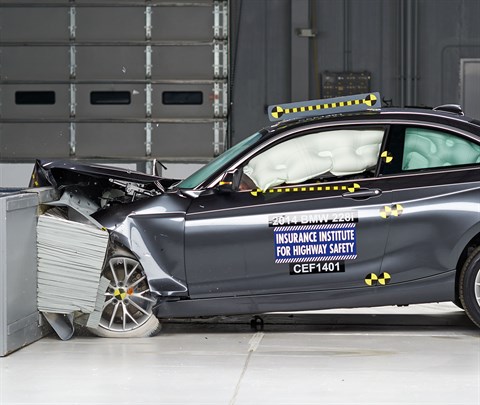
Action shot taken during the moderate overlap frontal crash test.
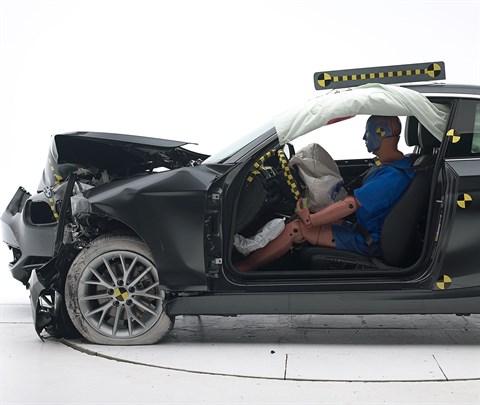
The dummy's position in relation to the steering wheel and instrument panel after the crash test indicates that the driver's survival space was maintained very well.
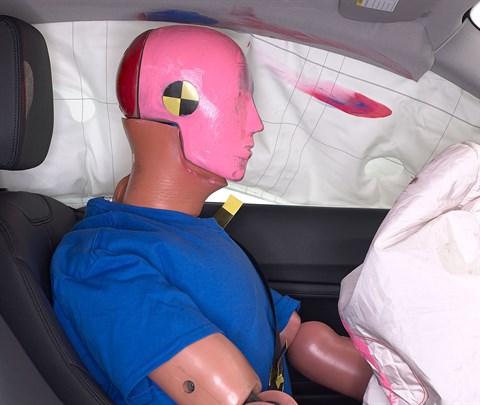
Smeared greasepaint shows where the driver dummy's head was protected from hitting hard structures during rebound by the side curtain airbag.
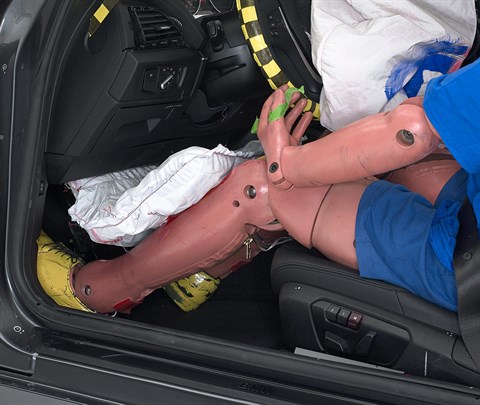
Intrusion into the driver's space was minimal, and all leg and foot injury measures were low.
Side: original test
Rating applies to 2014-21 models
Tested vehicle: 2014 BMW 228i 2-door with standard front and rear head curtain airbags and standard front seat-mounted torso airbags
The BMW 1 series was redesigned for the 2014 model year and renamed the 2 series.
| Evaluation criteria | Rating |
|---|---|
| Overall evaluation | |
| Structure and safety cage | |
| Driver injury measures | |
| Head/neck | |
| Torso | |
| Pelvis/leg | |
| Driver head protection | |
| Rear passenger injury measures | |
| Head/neck | |
| Torso | |
| Pelvis/leg | |
| Rear passenger head protection | |
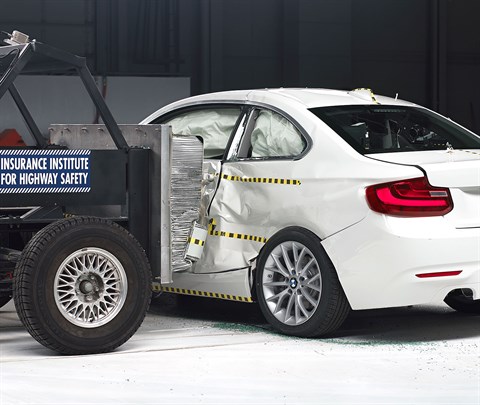
View of the vehicle and barrier just after the crash test.
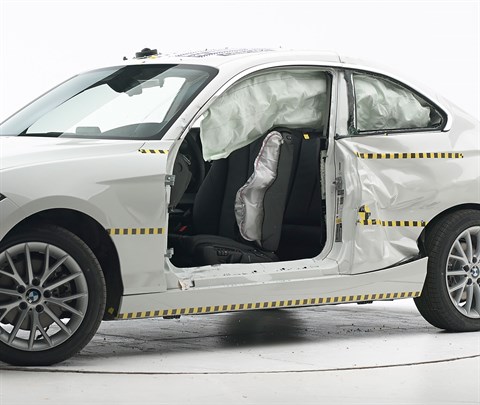
View of the vehicle after the crash with door removed, showing the side airbags and damage to the occupant compartment.
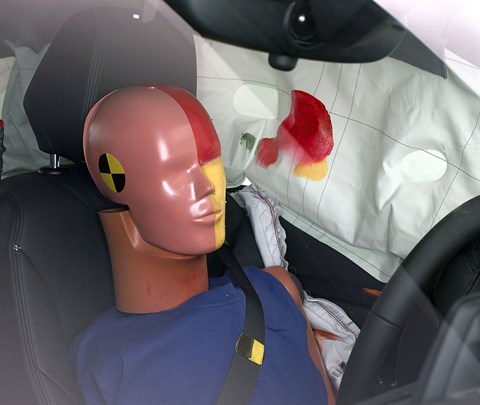
Smeared greasepaint shows where the driver dummy's head was protected from being hit by hard structures by the side curtain airbag.
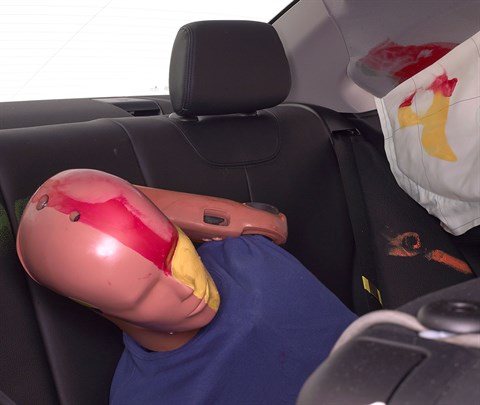
Smeared greasepaint shows where the rear passenger dummy’s head was protected by the side airbag. During rebound, the dummy's head and torso slid out from the shoulder belt and moved across the seat, but this motion does not cause any significant risk of injury.
Roof strength
Rating applies to 2014-21 models
Tested vehicle: 2014 BMW 228i 2-door
| Overall evaluation | |
|---|---|
| Curb weight | 3,311 lbs |
| Peak force | 16,504 lbs |
| Strength-to-weight ratio | 4.98 |
Head restraints & seats
Seat type: Power leather seat
| Overall evaluation | |
|---|---|
| Dynamic rating | |
| Seat/head restraint geometry |
About the head restraint & seat test
Currently, IIHS tests apply only to front seats.
